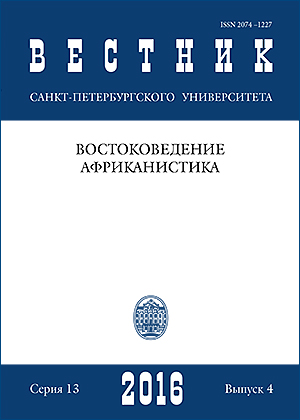Connotative meanings of numerals in the inner form of phrases: a case study of Russian and Chinese numerals один, первый and 一 yī
DOI:
https://doi.org/10.21638/11701/spbu13.2016.401Abstract
This article contributes to the comparative analysis and classification of implicit (connotative) meaning revealed by Russian and Chinese numerals “1” (cardinal and ordinal numbers) in the inner form of numeral phrases. Semantic comparison of Russian idioms and Chinese Chengyu with these numerals shows that Russian numerals один (one) and первый (first) and their Chinese equivalent 一 yī possess several regular types of connotations which actually compose most of the actual meanings of these numeral phrases. For example, when describing certain occurrences, phenomenon, concepts, single or multiple real objects or beings, both Russian and Chinese cardinal numerals один and 一 yī can be used in these meanings, such as ‘similar’, ‘unique’, ‘little, few (of relatively small number)’ or ‘random(whatever, whichever, whoever and etc.)’. Ordinal numbers первый and 一 yī also share several common connotations, including ‘starting, beginning’, ‘directly, frankly’ and ‘leading, prime’. By highlighting and focusing on such connotations of equivalent numerals within the inner form of numeral idioms of two different languages, students and translators can better understand their usage.
Keywords:
Russian phraseology, Chinese chengyu, numeral idioms, inner form of phrases, connotative meanings of word, numerals
Downloads
References
References
Downloads
Published
How to Cite
Issue
Section
License
Articles of "Vestnik of Saint Petersburg University. Asian and African Studies" are open access distributed under the terms of the License Agreement with Saint Petersburg State University, which permits to the authors unrestricted distribution and self-archiving free of charge.





